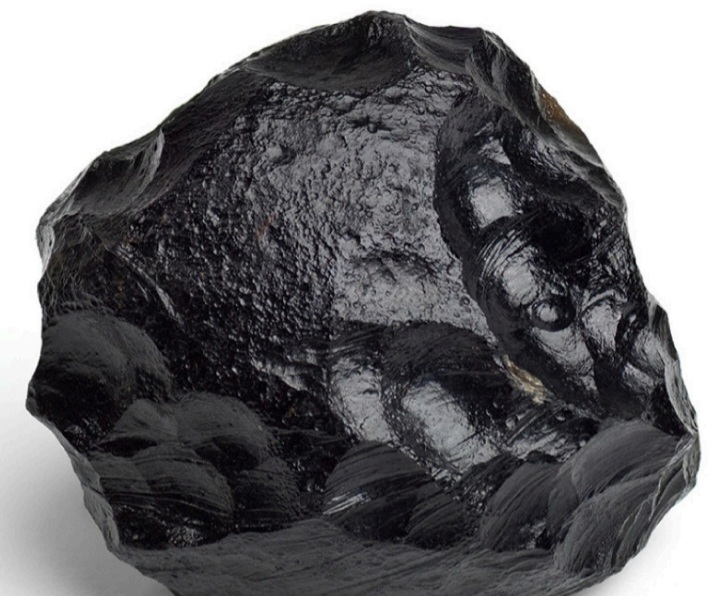Earth Treasures: Tektite

By Chisom Ibemere
Tektite is known as a natural glass which is formed from the ejected debris of meteorite impacts. It mostly comes in small pieces and some varieties have been cut and used for jewellery production in ancient times.
Tektites is a well known “raw stones” for jewellery production and used as display pieces. Its value depends greatly on their shape, size, and visual appeal, transparency and cut quality. They are usually opaque with dark colours. Lighter and translucent gems are highly prized and valued.
One of Tektite varieties are moldavites which are most likely to be sold as gemstones. They remain the highest priced of all tektites, though they’re still relatively inexpensive.
It is believed that tektites is formed from an explosive event on the Moon and were thrown all the way to the Earth’s surface by scientists while recent scientific believed that tektites formed from the impact of meteorites on the Earth’s surface.
Tektites are formed when material from the Earth that melted on impact and ejected into the atmosphere, fell back to the surface and cooled, forming Tektites.
Unlike stony, iron, and stony-iron meteorites recovered on Earth, tektites have terrestrial origins. Although formed by meteorite impacts, the tektites themselves have never been in outer space. The composition of tektites is consistent with terrestrial materials.
The refractive indices (RI) of tektites vary (positively) with the iron content. The most popular varieties of tektites are moldavites which may be sold in form of natural Tektites. They are the most popular variety and most likely to appear in jewellery or as cut gems. To distinguish them, inclusions are examined and fluorescence is being tested.
Tektites may be misidentifies with a natural glass known as obsidian but more common than Tektites. Obsidian has properties that overlap with those of tektite such as color, hardness, specific gravity, and refractive index. To clean Tektites, it is advised to use a soft brush, mild detergent and warm water due to their numerous inclusion content.
Tektites belong to the Mineral family, Mineraloid/ Meteorite. It is composed of glass with a Mohs hardness of 5-6.5. It comes in varieties of colours of Black, green, yellowish-green, greenish-brown, brown and colorless. It has an Amorphous crystal structure with a vitreous to dull lustre. It can be transparent to opaque and has a refractive index of 1.46-1.54 and density of 2.21-3.40 and posses no cleavage. It doesn’t display Pleochroism. Tektite are not seen and known in all places around the world.
